Abstract
OBJECTIVE: This study examines the age of retirement of general surgery Fellows of the American College of Surgeons from 1984 through 1995 and analyzes the potential effect on the work force in general surgery of age of retirement. SUMMARY BACKGROUND DATA: Data from the Fellowship files of the American College of Surgeons, the American Board of Medical Specialties, and the American Medical Association disclosed that the number of practicing general surgeons in the United States in 1994 was between 17,289 and 23,502, or approximately 7 general surgeons per 100,000 population in the United States. METHODS: The Fellowship files of the American College of Surgeons from 1984 through 1995 were searched for general surgeons who had written to ask for retirement status or who had died before retirement. Calculations were made of the effect of years in practice on the total general surgeon work force. All living retirees from 1984 to 1985 and 1994 to 1995 were questioned to learn the factors leading to a decision to retire. RESULTS: The average age of retirement for general surgeon Fellows has risen from 60.45 in 1984 to 62.97 in 1995. Because of increasing diversion of general surgery graduates into surgical specialties, total practice years are declining despite increasing length of practice time. The principal factors for retirement decisions in 1984 and 1985 were disability (26%), leisure time (20%), and unfavorable changes in surgery (29%). In 1994 and 1995, disability was a major factor in 14% of decisions, leisure time in 20%, and unfavorable changes in surgery in 56%. CONCLUSIONS: Fewer general surgeons enter the work force each year. Thus, despite working longer, the total number of years practiced by each cohort of new general surgeons has decreased.
Full text
PDF
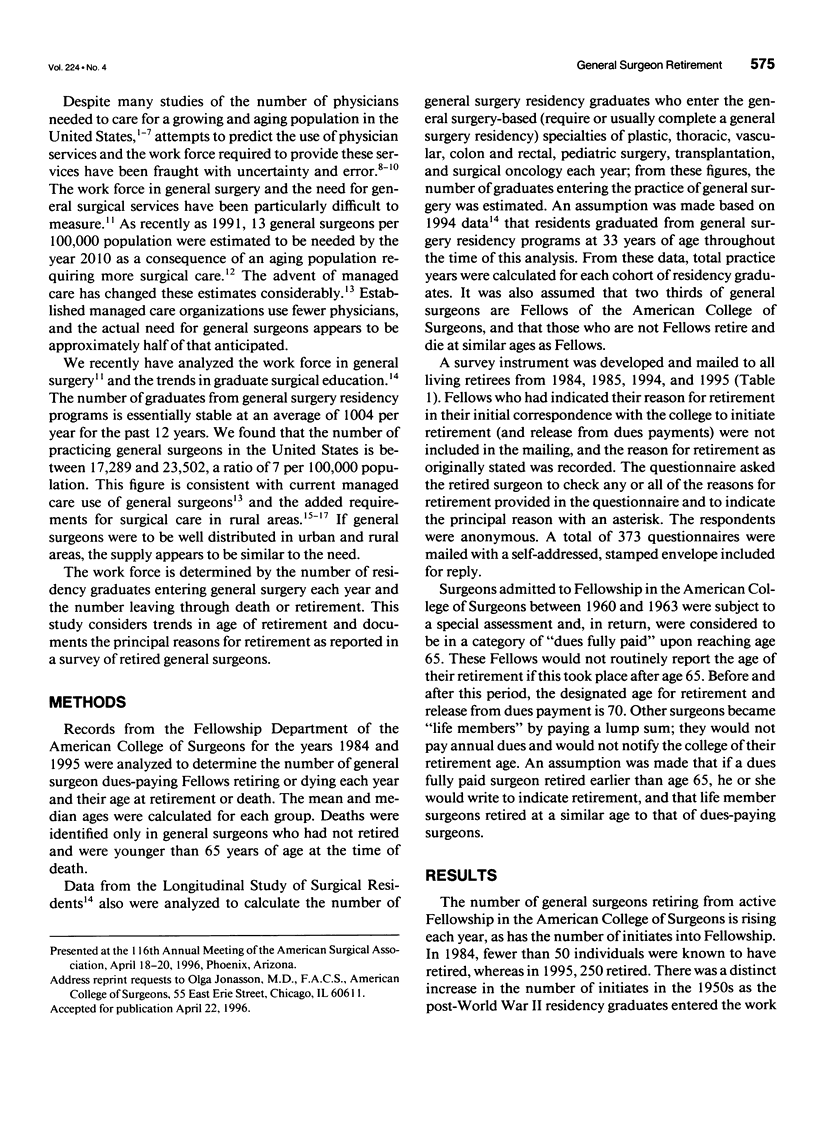
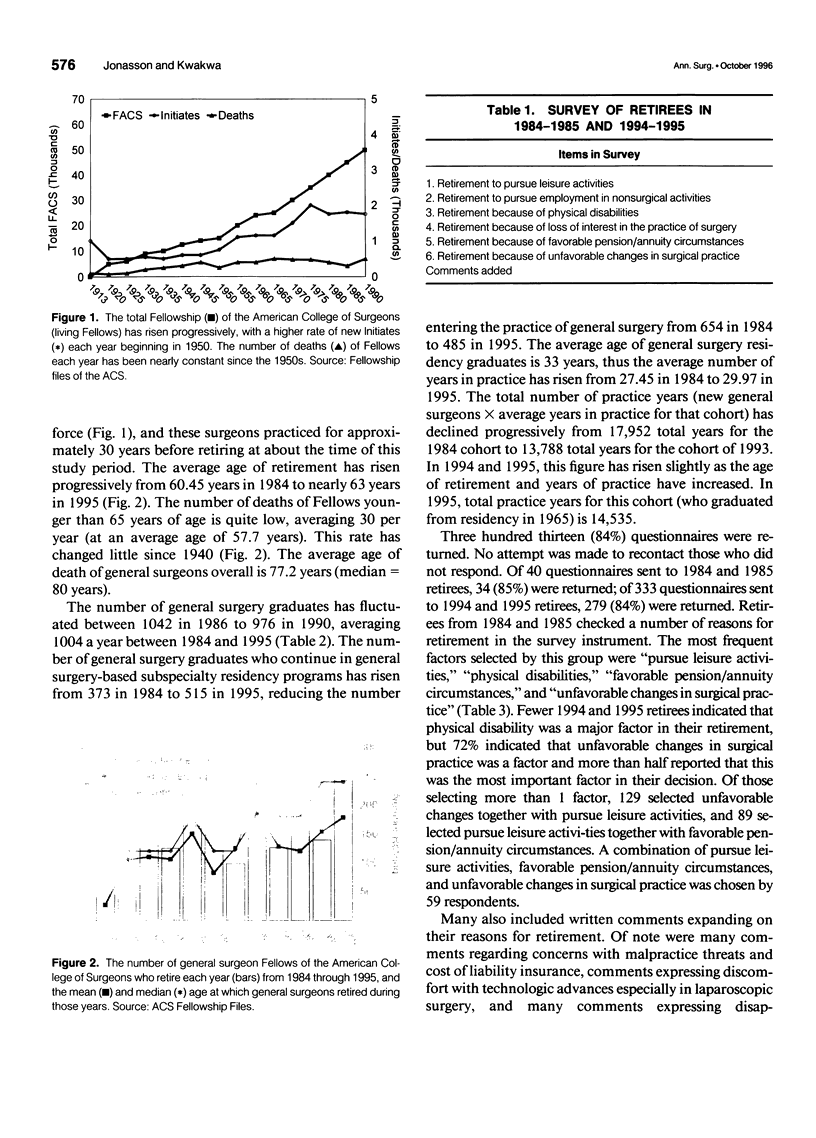
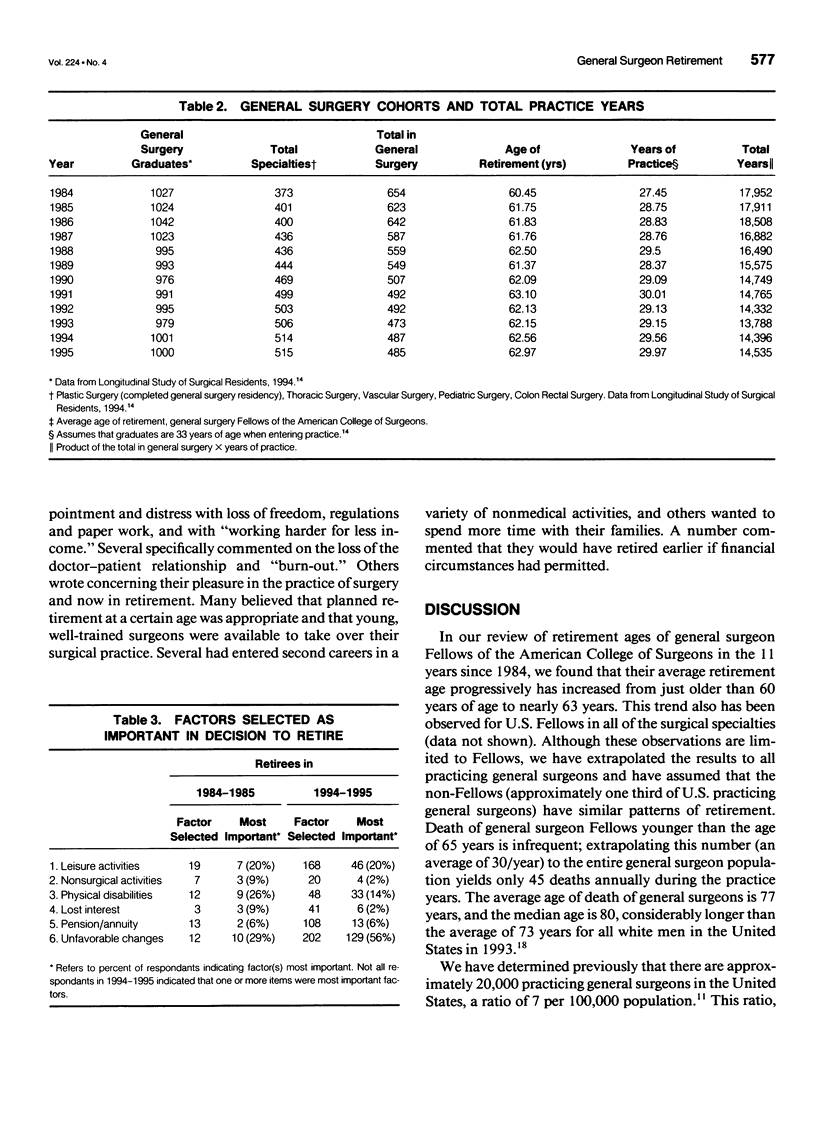
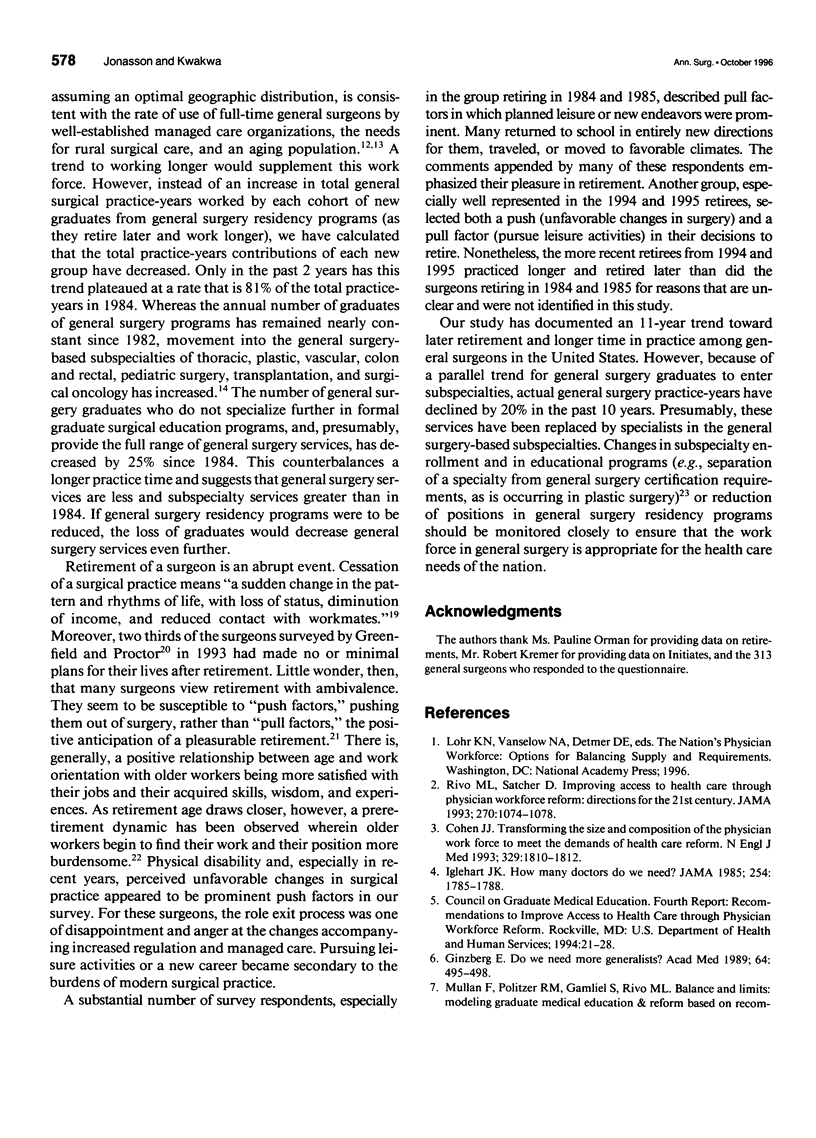
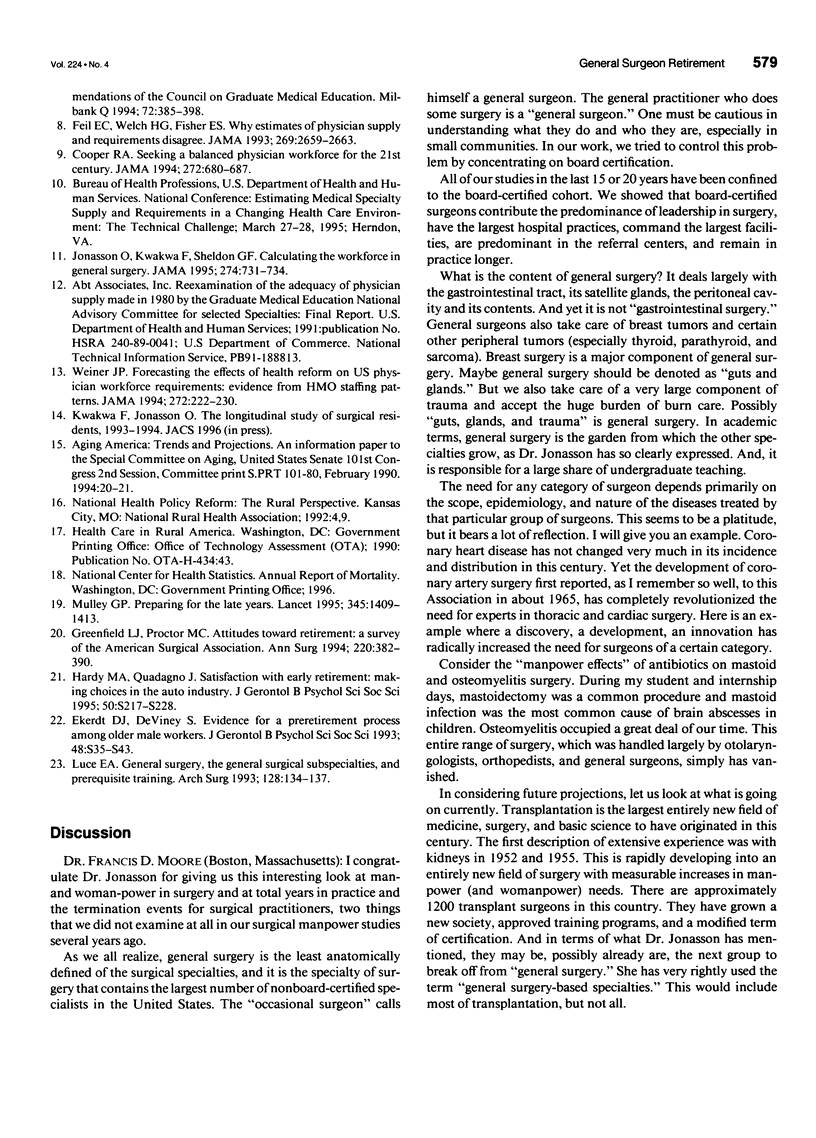
Images in this article
Selected References
These references are in PubMed. This may not be the complete list of references from this article.
- Cohen J. J. Transforming the size and composition of the physician work force to meet the demands of health care reform. N Engl J Med. 1993 Dec 9;329(24):1810–1812. doi: 10.1056/NEJM199312093292412. [DOI] [PubMed] [Google Scholar]
- Cooper R. A. Seeking a balanced physician workforce for the 21st century. JAMA. 1994 Sep 7;272(9):680–687. [PubMed] [Google Scholar]
- Ekerdt D. J., DeViney S. Evidence for a preretirement process among older male workers. J Gerontol. 1993 Mar;48(2):S35–S43. doi: 10.1093/geronj/48.2.s35. [DOI] [PubMed] [Google Scholar]
- Feil E. C., Welch H. G., Fisher E. S. Why estimates of physician supply and requirements disagree. JAMA. 1993 May 26;269(20):2659–2663. [PubMed] [Google Scholar]
- Ginzberg E. Do we need more generalists? Acad Med. 1989 Sep;64(9):495–497. doi: 10.1097/00001888-198909000-00001. [DOI] [PubMed] [Google Scholar]
- Greenfield L. J., Proctor M. C. Attitudes toward retirement. A survey of the American Surgical Association. Ann Surg. 1994 Sep;220(3):382–390. doi: 10.1097/00000658-199409000-00014. [DOI] [PMC free article] [PubMed] [Google Scholar]
- Hardy M. A., Quadagno J. Satisfaction with early retirement: making choices in the auto industry. J Gerontol B Psychol Sci Soc Sci. 1995 Jul;50(4):S217–S228. doi: 10.1093/geronb/50b.4.s217. [DOI] [PubMed] [Google Scholar]
- Iglehart J. K. How many doctors do we need? The tenth annual Duke Private Sector Conference. JAMA. 1985 Oct 4;254(13):1785–1788. [PubMed] [Google Scholar]
- Jonasson O., Kwakwa F., Sheldon G. F. Calculating the workforce in general surgery. JAMA. 1995 Sep 6;274(9):731–734. [PubMed] [Google Scholar]
- Luce E. A. General surgery, the general surgical subspecialties, and prerequisite training. Arch Surg. 1993 Feb;128(2):134–137. doi: 10.1001/archsurg.1993.01420140011002. [DOI] [PubMed] [Google Scholar]
- Mullan F., Politzer R. M., Gamliel S., Rivo M. L. Balance and limits: modeling graduate medical education reform based on recommendations of the Council on Graduate Medical Education. Milbank Q. 1994;72(3):385–398. [PubMed] [Google Scholar]
- Mulley G. P. Preparing for the late years. Lancet. 1995 Jun 3;345(8962):1409–1413. doi: 10.1016/s0140-6736(95)92601-1. [DOI] [PubMed] [Google Scholar]
- Rivo M. L., Satcher D. Improving access to health care through physician workforce reform. Directions for the 21st century. JAMA. 1993 Sep 1;270(9):1074–1078. [PubMed] [Google Scholar]
- Weiner J. P. Forecasting the effects of health reform on US physician workforce requirement. Evidence from HMO staffing patterns. JAMA. 1994 Jul 20;272(3):222–230. [PubMed] [Google Scholar]



